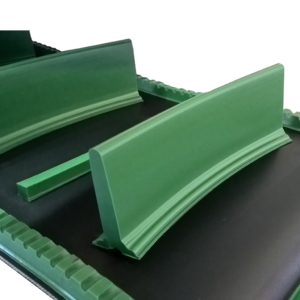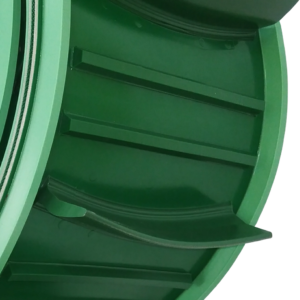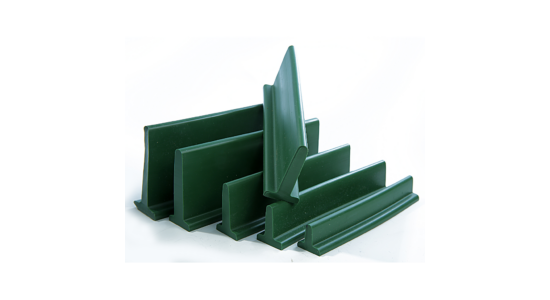In the production-process of conveyor belts, we are able to weld a variety of profiles, strips, guides, and shapes on the conveyor-belt surface. These accessories can be selected from a large selection of colors and shapes – best suited to its purpose. In our workshop we are able to weld conform 2 different methods – each has its own benefit.
Hot-Air PVC welding - a good-old method with the following advantages:
- no need for high-voltage electricity
- the belt does not melt during welding
- allows for more affordable tools and equipment
The disadvantages of hot-air welding, however, are the following:
- generates smoke that needs to be extracted and filtered-away
- generates waste that needs to be stored and disposed of,
- more labor-intensive as it requires careful eye-hand coordination,
- aesthetically less nice on the edges, although it does not affect the functionality of the belt
- In the specific case of repairing belts for grape-harvesters, the top guiding functions need to be extracted as we need to separately replace the blades, which means additional costs and more work,
- The curved blade can not be melted on the belt in a nice curve - as it is shown in the picture below

Secondly, we use the method of High-Frequency welding. Because of its speed and automation, this method is used in many different industries such as:
- manufacturing of lightweight conveyor-belts
- production of Bags and suitcases
- toys
- production of shoes
- welding of laminated films
- production of technical and medical products
- production of waterproof, protective clothing and sun-umbrellas
- embossed labels of albums and folders
The advantages of High-Frequency welding during the conveyor belt production are as follows:
- fast
- smoke-free
- a minimum amount of waste generated
- when repairing a belt, there is no need to extract the top guide profiles while replacing the blades
- grape-harvester belts can be refurbished at reduced costs and less work
- curved blades can be nicely welded on the belt because of a special tool, which can be seen in the picture below:

But High-Frequency welding also has its disadvantages:
- higher costs of tools
- almost every profile requires a different tool
- allows for limited size possibilities
- the melting can cause some dirt which, if neglected, can cause significant damage to the belt
- very sensitive to dirt must use very clean materials, and metal powder or granulate may not be left
Taking these considerations into account, it is clear that each welding method has its own advantages and disadvantages. At high volumes high-frequency welding is preferable, but in case of making very short and very wide conveyor-belts hot-air welding is preferred. Conveyor belt manufacturers will use both methods simultaneously because it is not worthwhile making a commitment to one single technology. Appropriate design and welding-tools can be used to maximize the benefits of the two welding methods.
